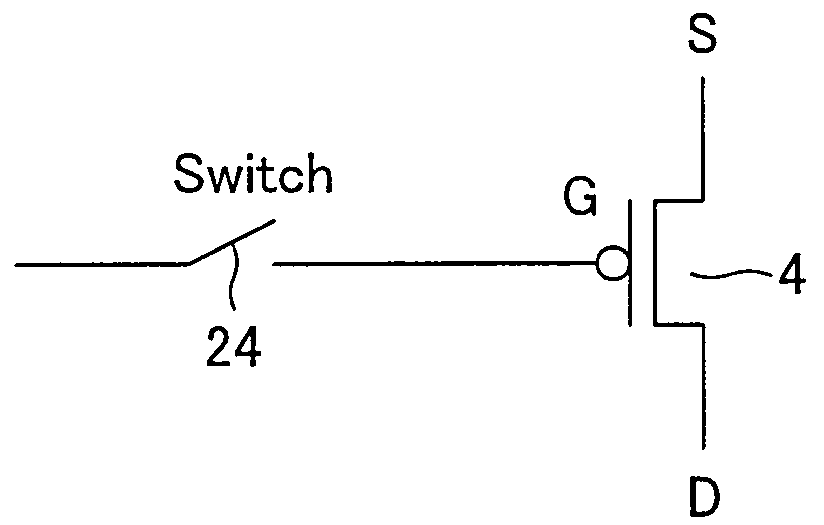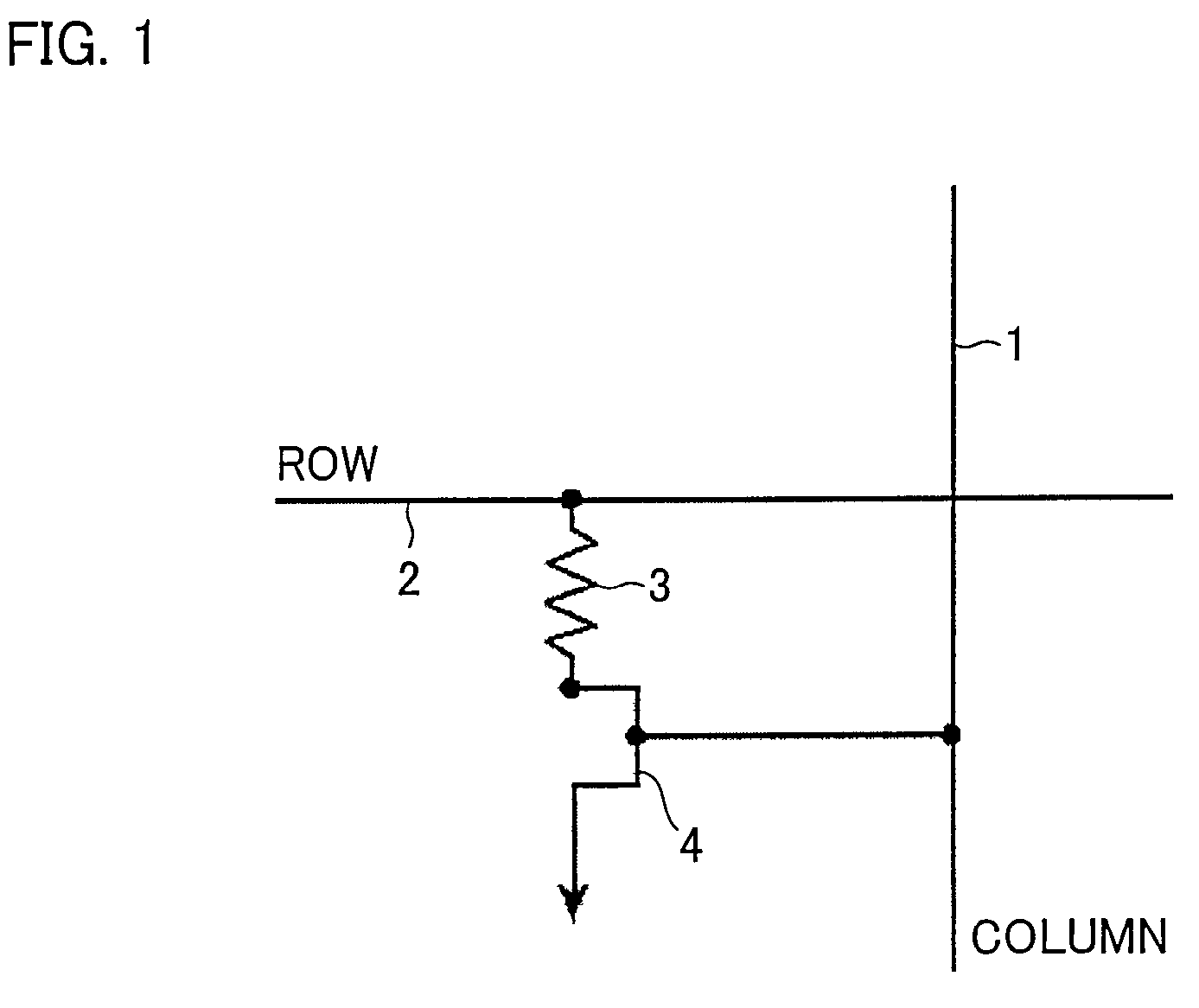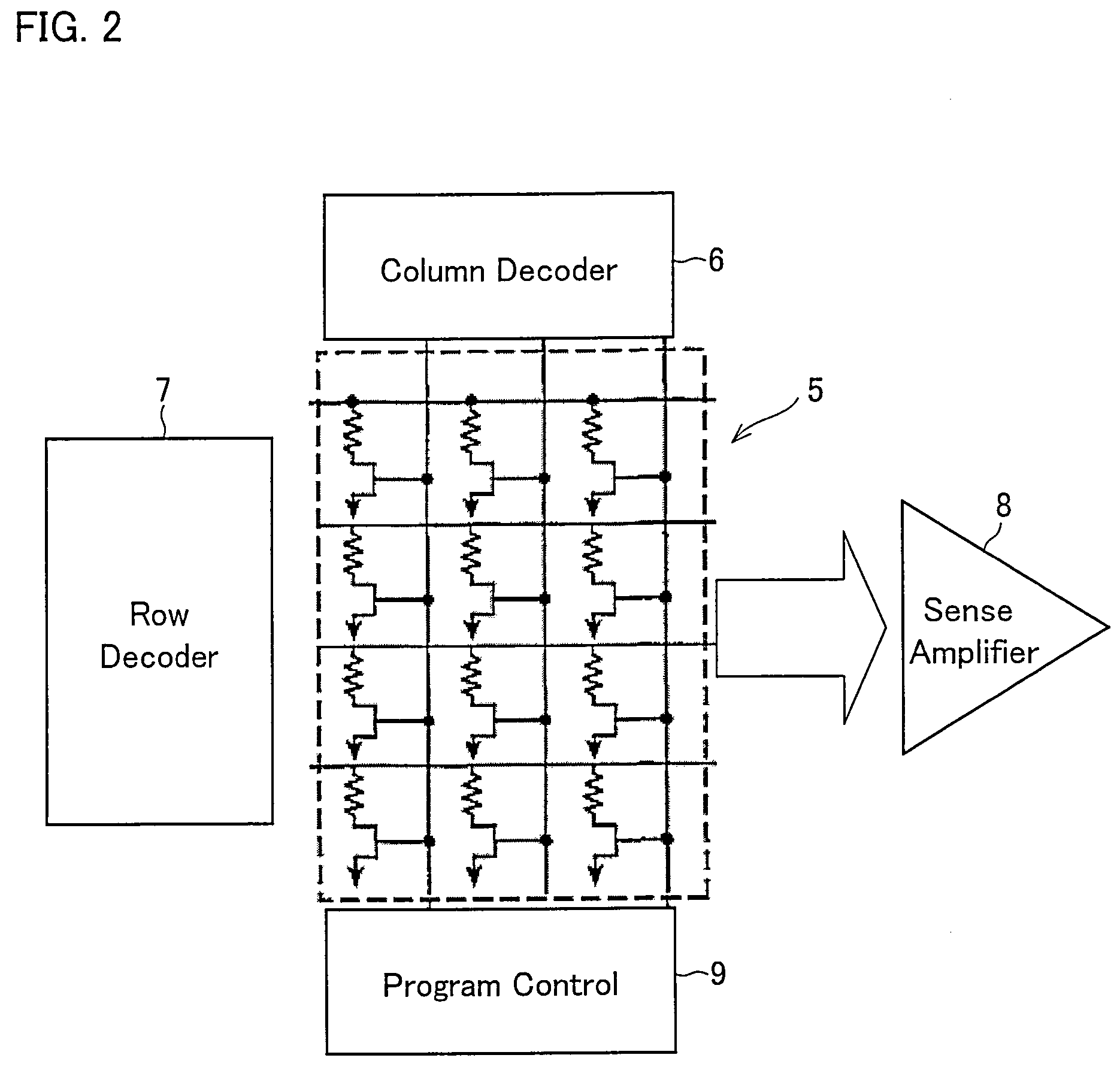Programmable read-only memory
a read-only memory and programmable technology, applied in the field of programmable read-only memory, can solve the problems of increasing the cost of manufacturing such a memory, limiting the number of memory cells, and not always being a standard process feature, so as to reduce the area, reduce the cost of production or manufacturing yield, and the effect of increasing capacity
- Summary
- Abstract
- Description
- Claims
- Application Information
AI Technical Summary
Benefits of technology
Problems solved by technology
Method used
Image
Examples
Embodiment Construction
[0057]Like reference numerals refer to like parts throughout the drawings.
[0058]The memory cell shown in FIG. 8 may be used as a single bit PROM for non-volatile storing of a single bit of information. More typically, the memory cell is used as one element of an array of memory cells which, together with row and column decoding circuits and read and programming circuits, forms a memory for storing multiple bits or multiple words of information. Such a memory may be formed as an integrated circuit for use with other devices or circuits or may form part of an integrated circuit incorporating circuitry for performing other functions.
[0059]The memory cell comprises a transistor 4 and an electronic switch (first electronic switch) 24. In the example shown in the FIG. 8, the transistor 4 is an insulated gate field effect transistor (IGFET), for example formed as a metal oxide silicon (MOS) transistor. For example, the transistor may be a thin film transistor (TFT) and has a control electr...
PUM
 Login to View More
Login to View More Abstract
Description
Claims
Application Information
 Login to View More
Login to View More - R&D
- Intellectual Property
- Life Sciences
- Materials
- Tech Scout
- Unparalleled Data Quality
- Higher Quality Content
- 60% Fewer Hallucinations
Browse by: Latest US Patents, China's latest patents, Technical Efficacy Thesaurus, Application Domain, Technology Topic, Popular Technical Reports.
© 2025 PatSnap. All rights reserved.Legal|Privacy policy|Modern Slavery Act Transparency Statement|Sitemap|About US| Contact US: help@patsnap.com



